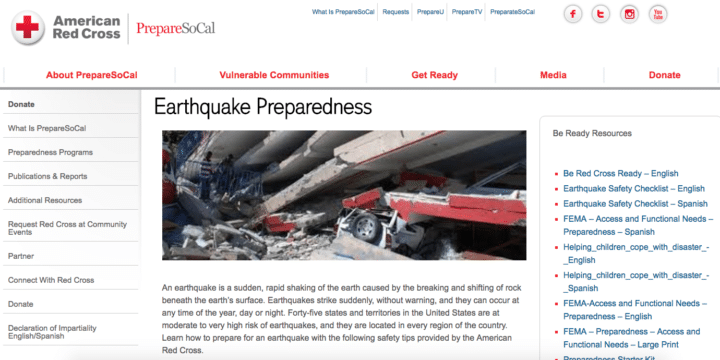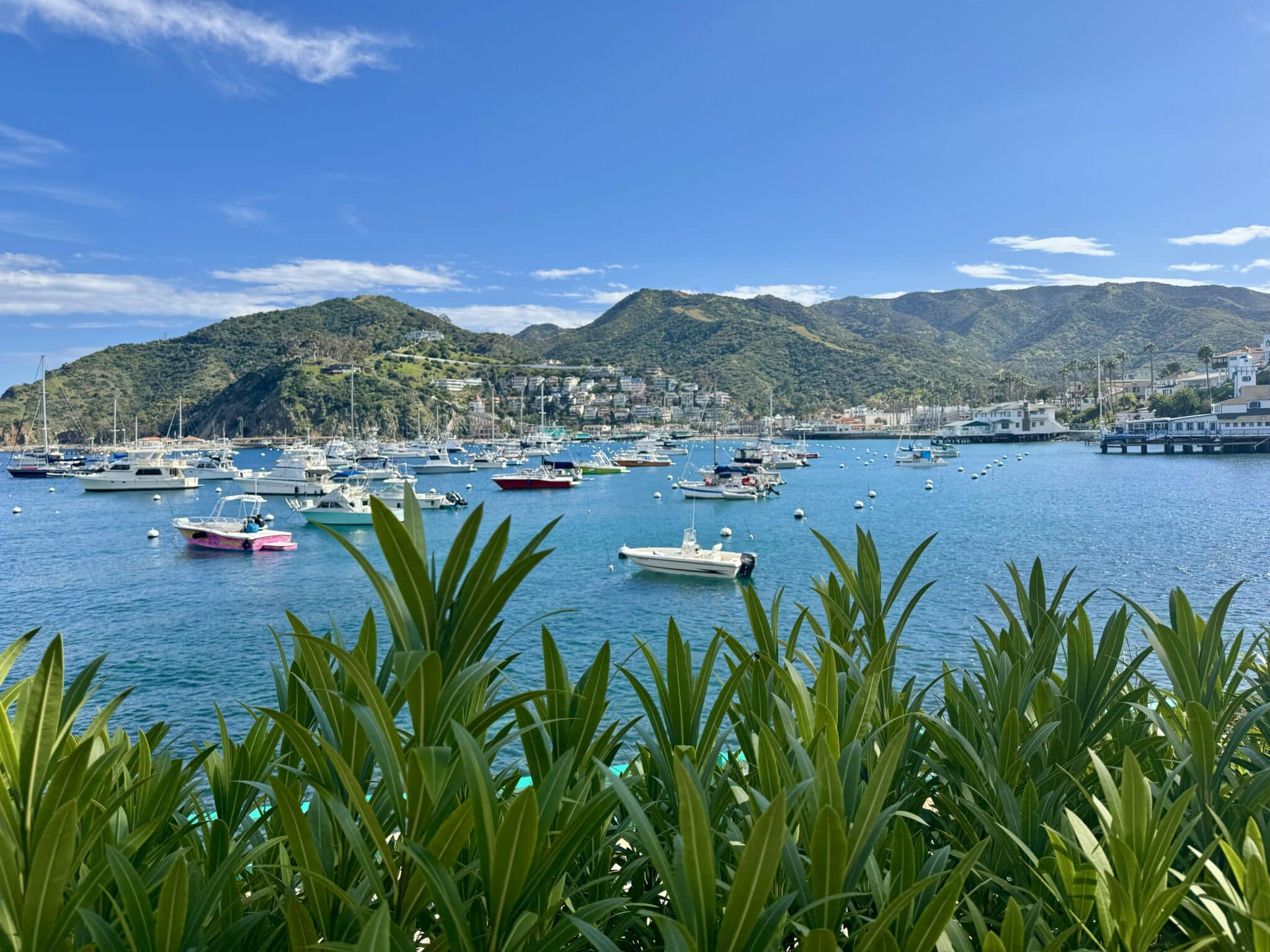If you live in Los Angeles, then no doubt you felt last night’s earthquake. The quake’s epicenter was just under 10 miles from our house so it felt like it was much bigger than a 4.4. Olivia had fallen asleep on the couch while watching a movie with her brother, Jack. I was working on my laptop at the kitchen table. When the entire house shook and all the glassware in our cabinets began rattling, I jumped up and grabbed her since she was lying close to the windows.
My wife screamed and Jack froze. It’s the first earthquake he’s really felt since all the others have happened while he was sleeping. It was pretty terrifying and in that split second, you think, “what should I do?” That’s why today’s travel tip is to remind you of what to do in an earthquake because even if you think you know what to do, your mind can go blank when you’re scared. It doesn’t hurt to reinforce the information. That’s why it’s always advised that you pay attention to airline safety videos every time you fly. Because no matter how often you fly, if an emergency does happen, you want to have survival information fresh in your mind. Earthquakes can happen anywhere and I’ve experienced them in Tokyo, Hawaii, Italy, Washington D.C. and even in my childhood state of Connecticut.
The local news suggested viewers check out the Earthquake Preparedness page on PrepareSoCal.org, a site created by the Red Cross. It’s full of good information for anyone that lives in/travels to California or any place prone to earthquakes. Note that this PrepareSoCal page has resources related to other natural disasters, as well. Here are some of the key takeaways from the Earthquake Preparedness page:
Preparing for an earthquake:
- Become aware of fire evacuation and earthquake safety plans for all of the buildings you occupy regularly.
- Pick safe places in each room of your home, workplace and/or school. A safe place could be under a piece of furniture or against an interior wall away from windows, bookcases or tall furniture that could fall on you.
- Practice “drop, cover and hold on” in each safe place. If you do not have sturdy furniture to hold on to, sit on the floor next to an interior wall and cover your head and neck with your arms.
- Keep a flashlight and sturdy shoes by each person’s bed in case the earthquake strikes in the middle of the night.
- Bolt bookcases, china cabinets and other tall furniture to wall studs.
- Hang heavy items, such as pictures and mirrors, away from beds, couches and anywhere people sleep or sit.
- Install strong latches or bolts on cabinets. Large or heavy items should be closest to the floor.
- Learn how to shut off the gas valves in your home and keep a wrench handy for that purpose.
- Keep and maintain an emergency supplies kit in an easy-to-access location.
If you’re inside during an earthquake:
- Drop, cover and hold on. Move as little as possible.
- If you are in bed, stay there, curl up and hold on. Protect your head with a pillow.
- Stay away from windows to avoid being injured by shattered glass.
- Stay indoors until the shaking stops and you are sure it is safe to exit. When it is, use stairs rather than the elevator in case there are aftershocks, power outages or other damage.
- Be aware that fire alarms and sprinkler systems frequently go off in buildings during an earthquake, even if there is no fire.
If you’re outside during an earthquake:
- Find a clear spot (away from buildings, power lines, trees, streetlights) and drop to the ground. Stay there until the shaking stops.
- If you are in a vehicle, pull over to a clear location and stop. Avoid bridges, overpasses and power lines if possible. Stay inside with your seatbelt fastened until the shaking stops. Then, drive carefully, avoiding bridges and ramps that may have been damaged.
- If a power line falls on your vehicle, do not get out. Wait for assistance.
- If you are in a mountainous area or near unstable slopes or cliffs, be alert for falling rocks and other debris. Landslides are often triggered by earthquakes.
There’s a lot more info, including in the section titled “What Happens After The Shaking Stops.” Check out PrepareSoCal.org to get prepared. Another great resource is Ready.gov.
The Earthquake App I Use
–QuakeFeed: The Earthquake App That Tells You What You Need to Know
10 Items I Have in Case of Emergency
I’ve always been a safety kind of guy. Ever since I moved from Connecticut to Southern California to go to college, I’ve made sure to stay on top of safety information and made sure that I had emergency supplies on hand. Here in California, there’s always the threat of earthquakes, wildfires and mudslides. Then I had kids and then came a global pandemic, which kicked my emergency preparedness up a few notches. It’s not really fun to think about these things but I think it’s better to get prepared so you don’t have to think about them. It will give you some peace of mind and you’ll hopefully feel calmer in the event of an emergency. Here are 10 items I have in case there’s an emergency, whether I’m traveling or at home.








